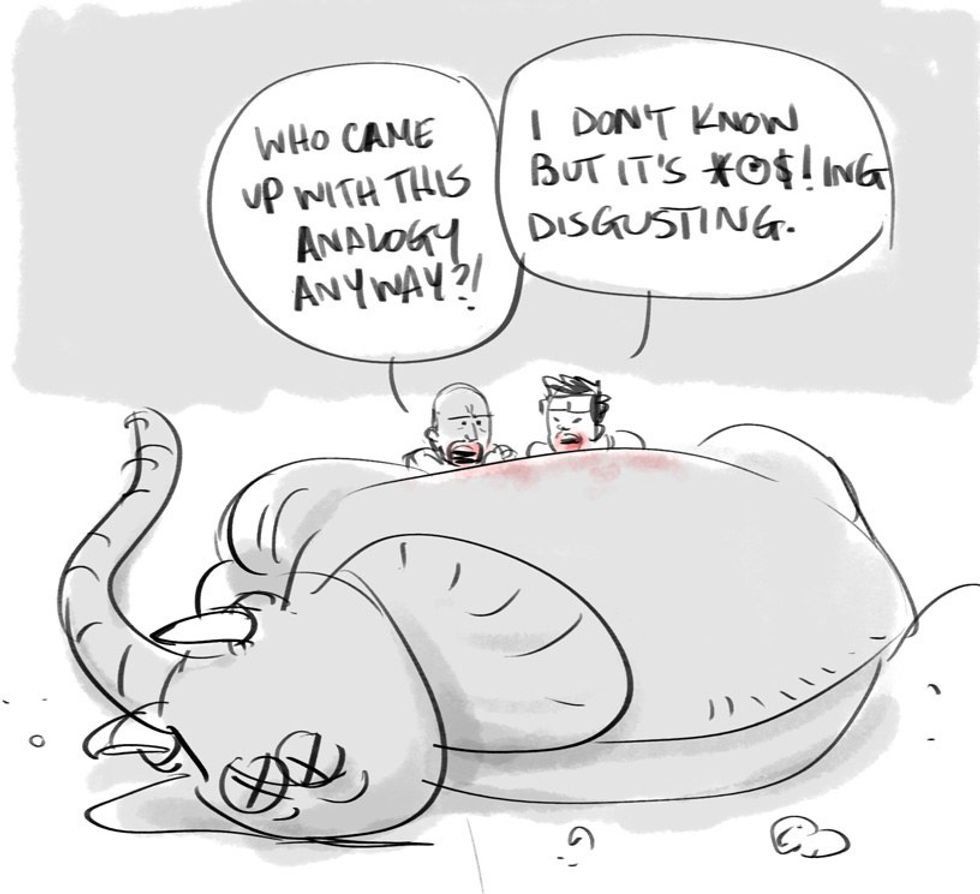Growing up in the 21st century has been an odd witness to modern technological advancement completely revolutionizing the use of communication and art on the Internet. We've watched social platforms like YouTube, Vine, Instagram, SoundCloud, Spotify, and even Netflix change how we interact not only with each other but with the content we consume. This can sometimes lead to a need for Internet safety awareness, sure, but it also opens up many opportunities in terms of learning, communicating and networking.
YouTube, if we're being specific, has been a complete game changer as a social platform for expanding the online market for not only entertainment but also educational content.
Most students that have been subjected to the public school common core curriculum have taken an English class at some point in their lives — and more often than not, it's nothing like "Dead Poet's Society." The fun of writing essays and reading literary criticisms usually depends on who you ask, and while most people usually like to discuss what they liked or disliked about a book, movie, or television show, they're not really going to go as far as read a secondary criticism by Harold Bloom. (No offense to English teachers, but 20-page typewritten articles are a little unappealing.)
While YouTube has more often than not been an overwhelming source for music videos and vine compilations, it has also expanded the market for educational resources. The Green brothers (John and Hank, if you live under a rock) have made an overwhelming success with their "Crash Course" series over the years — and their channel offers a lot of course material for history, English, science, economics, psychology, anatomy, physics, and much more. As it turns out, people like learning.
Cue the rise of video essays.
The combination of a social platform of communication and an expanding market for educational content creates a unique form of analytical criticism that has mostly been limited to paper articles until now. Most people would agree, watching a video is way more preferable than a 20-page article.
Hence the term "video essay."
Whether you're a pretty solid fan of film or you prefer the written word, analytical criticisms are pretty much a discussion of the work. The difference between a video essay and a review, however, is the discussed content. A video essay mimics the art of a literary criticism; it has a thesis. The expansion of this thesis, and the overall discussion ranges from short segments of five minutes to a full-blown hour. Video essays provide articulate and sophisticated analyses of modern art and popular media in the same form of a traditional literary criticism.
And these users know what they're talking about.
Popular user Lindsey Ellis, with a Masters in Cinematography and Film Production from the University of Southern California, uses her channel as a platform for her insightful analyses on Disney animation, Broadway musical-to-film adaptations, and much more. Her lengthy but thorough movie criticisms recognize the historical context of the making of the film, and the structure of the film as a story itself.
Karsten Runquist's channel focuses his shorter segments on the art of filmmaking — the use of character, symbolism, and overall deconstruction of how one tells a story through film.
Pop Culture Detective, iamthatroby, Patrick Willems, and so many more users and critics contribute to this unique, entertaining, and education section of YouTube that is, in my opinion, highly underrated. While I was originally introduced to video essays by a friend (and a 40-minute discussion of Disney's Hercules), they have become pretty much most of my YouTube suggested videos feed.
While I get off my soapbox, I close with this. The expanding art of video essays is an incredible product of artistic expression and social platform. It not only stimulates discussion among users of YouTube, but is a literal advancement of the modern study of art. While they are underrated, video essays are really, really awesome.
YouTube has come a long way since being founded in 2005, and the expanding variety of videos and users is literally revolutionizing the way we interact. Technology can be used for such wonderful things — a means of communication, a vessel for creativity, a means of professional networking — and the market for these platforms are still growing.





 Photo by
Photo by  Photo by
Photo by 
 Photo by
Photo by 


















